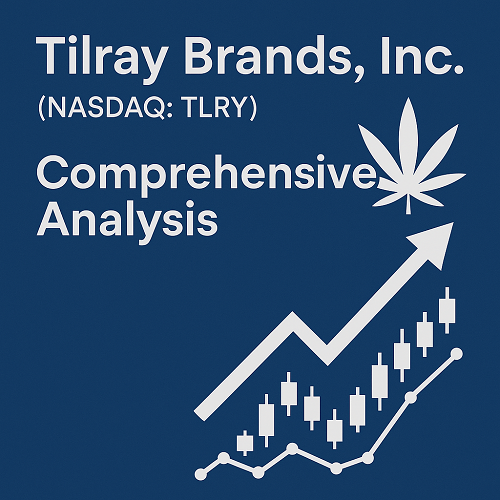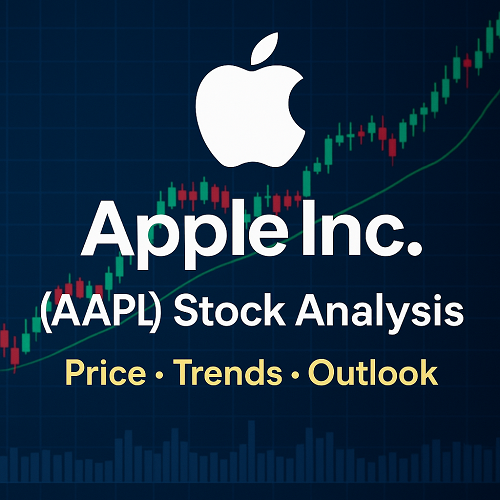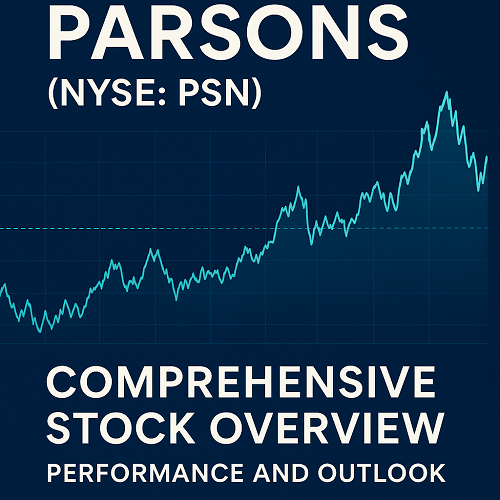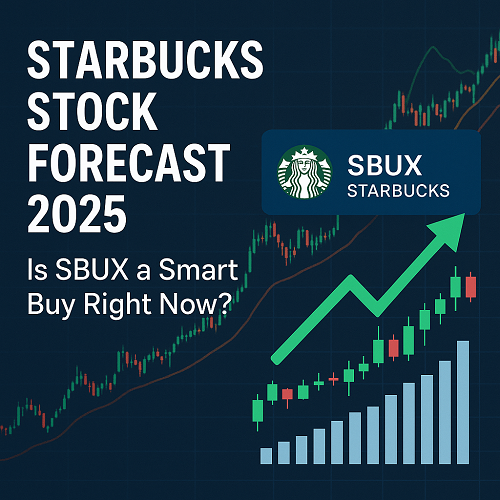Company Overview & Business Model
Company Snapshot
Tilray Brands, Inc. (TLRY) is a publicly-traded company on the NASDAQ under ticker TLRY, headquartered in New York City (with operating HQ in Leamington, Ontario) and founded in 2013.
The company describes itself as a global “lifestyle consumer packaged goods” company at the intersection of cannabis, beverages, wellness and craft beer.
Business Segments & Model
Tilray operates multiple business segments:
- Cannabis operations: cultivation, processing, distribution of medical and adult-use cannabis globally.
- Beverage & craft beer / alcohol business: tilting toward craft beer brands, non-alcoholic and alcohol beverage segments.
- Wellness & hemp-derived products: hemp foods, extracts, wellness brands.
- Distribution & global reach: International operations across Canada, USA (where legal), Europe, Latin America.
In short, the strategy is to leverage the evolving legal cannabis market while diversifying into adjacent CPG (“consumer packaged goods”) segments (beverages, wellness) to reduce dependency on cannabis regulation alone.
History & Strategic Moves
Key milestones:
- Originally incorporated in 2013, one of Canada’s early licensed cannabis producers.
- Merged with Aphria in December 2020 to create a larger global cannabis/CPG platform under the Tilray name.
- Expanding craft‐beer/beverage portfolio: e.g., acquisition of eight beverage brands from Anheuser-Busch InBev.
Thus, Tilray is a dual-track story: cannabis + CPG diversification.
Recent Financial Performance & Metrics
Revenue & Profitability
- For the quarter ended August 31, 2024: net revenue of US $200.0 million, up from US $176.9 million a year ago.
- Gross profit for that quarter: US $59.7 million vs US $44.2 million in prior year.
- However, the company reported a net loss: US $34.65 million in that quarter, though smaller than the prior year’s US $55.86 million.
- For the fiscal year: Revenue circa US $821.3 million (per data) with a larger net loss.
Balance Sheet & Cash Flow
- As of August 31, 2024: total assets approx US $4.26 billion; current assets ~US $725.9 million. Total liabilities ~US $778.5 million.
- Operating cash flow in the quarter: the company used ~US $35.3 million in operations.
- The debt burden: long-term debt ~US $155.3 million, convertible debentures ~$132.65 million.
Recent Developments
- Recent Q1 FY 2026 results: the company reported net revenue of US $210 million, with net income of US $1.5 million and Adjusted EBITDA up 9% to US $10 million.
- From Q3 FY 2025 (ended February 28, 2025): Introduced cost‐savings plan (Project 420), improved cannabis gross margins by ~800 bps, sales growth in Germany, reduction in convertible note debt by $58 million.
Key Metrics & Ratios
- Beta: ~2.08 (higher volatility) according to Financial Times data.
- Market cap: modest (given ~$1.57 share price).
- Loss history: company still unprofitable though improving.
- Revenue growth: modest in recent quarters (single digits) but positive.
Strategic & Operational Highlights
Diversification Strategy
Tilray’s move into craft beer, beverages and wellness is aimed at reducing the risk of pure cannabis exposure (which is heavily regulated and subject to legal risk). For example, it acquired multiple beverage brands from Anheuser-Busch InBev, enhancing its craft beer credibility.
International Footprint
Tilray has operations outside North America, including in Europe (Germany, Portugal) and Latin America. This gives potential upside from global cannabis legalisation trends.
Cost & Margin Improvements
The company has announced cost-savings initiatives (e.g., “Project 420”), margin improvement in cannabis segment (~800 bps improvement reported) and debt reduction. These are positives.
Regulatory Tailwinds
While still facing headwinds, any further cannabis regulatory reforms (especially in the U.S.) could significantly benefit the company’s growth prospects.
Valuation, Market Position & Competitive Landscape
Market Position
Tilray positions itself in the intersection of cannabis + consumer packaged goods. Among cannabis companies, it has one of the more diversified business models, which could be an advantage.
However, competition is fierce (with many Canadian and U.S. cannabis companies) and regulatory risk remains elevated.
Valuation Considerations
- With the share price around $1.50-$1.60 and large share count, the implied market cap is modest.
- The company is not yet profitable on a full-year basis.
- Traditional valuation metrics (P/E) may not apply until consistent profitability is achieved.
- For value investors, the question becomes: can Tilray improve margins, grow revenue meaningfully, and reach sustainable profitability?
Key Peers
Peers include other cannabis producers (e.g., Canopy Growth, Aurora Cannabis) and beverage/CPG companies. Tilray’s diversification gives it a somewhat unique profile (not pure cannabis).
Strength vs Weakness of Model
- Strength: diversified segments (cannabis + beverages + wellness)
- Weakness: diluted focus, execution risk across multiple segments, regulatory uncertainty still high
SWOT Analysis
Strengths
- Broad business model: not solely reliant on cannabis.
- Global footprint: presence in North America and Europe.
- Margin improvement initiatives underway.
- Early mover in craft beer + cannabis / wellness crossover.
Weaknesses
- Still unprofitable; cash-flow negative in many quarters.
- High volatility (beta ~2.08) and high risk from regulatory/legal issues.
- Share dilution risk (issuance of shares to raise capital).
- Execution risk: managing multiple segments simultaneously.
Opportunities
- U.S. federal cannabis legislation changes would be a major catalyst.
- Growth in craft beer/beverage segment could accelerate.
- International expansion into legalized markets.
- Synergies across cannabis + wellness + beverages could unlock higher margins.
Threats
- Regulatory crackdowns or slow pace of legalization.
- Competitive pressure in cannabis and beverages.
- External macro factors (economic downturn impacting discretionary spend on cannabis/beverages).
- Dilution or capital-raising risk harming shareholder value.
Risk Factors & Catalysts
Key Risk Factors
- Regulatory risk: Cannabis remains federally illegal in the U.S.; changes may be unpredictable.
- Execution risk: Integrating craft beer/beverage brands, managing global operations.
- Financial risk: Continued reliance on cash infusions until full profitability.
- Market risk: Price volatility, sector sentiment can swing sharply (see recent news).
- Dilution risk: Issuance of new shares or debt can dilute value.
Potential Catalysts
- U.S. legalisation: If federal cannabis laws loosen, US expansion potential is massive.
- Margin improvements: Continued cost reductions, margin expansions could improve profitability.
- Beverage brand growth: Strong performance in craft beer & beverages could diversify revenue and reduce dependence on cannabis.
- International expansion: New market entries in Europe or Latin America.
- Positive earnings surprise: As shown in Q1 FY 2026 results, positive net income albeit small is a step.
Technical & Trading Setup
Price & Volatility
- Current price: approx US $1.57 per share.
- High beta (~2.08) indicates above‐average volatility.
Chart & Price Levels (qualitative)
- Given the low share price, small absolute moves in price translate to large percentage changes.
- Support levels might exist in the ~$1.50 region (given recent price). Resistance around $2.00-$2.50 (depending on prior highs).
- Volume spikes in news events (earnings surprises, regulatory headlines) likely.
- Traders may consider near-term setups: breakout above $2.00 could trigger momentum, while breakdown below ~$1.40 could see further weakness.
Trading Considerations
- Given high risk/high reward profile, this is more suited to speculative or tactical trading rather than buy-and-hold unless one strongly believes in the long-term catalyst (e.g., U.S. legalization).
- For swing traders: watch for earnings, news, regulatory updates, and beverage/brand announcements.
- For longer‐term investors: focus on margin improvements, cash‐flow generation, and regulatory developments.
Investment Conclusion & Trading Strategy
Conclusion
Tilray Brands presents an intriguing but high-risk profile. On the one hand, the company is improving operationally (margin improvement, cost savings, beverage-diversification) and holds positioning in a growth market (cannabis + wellness + beverages). On the other hand, it still lacks consistent profitability, is exposed to regulatory and execution risks, and its stock is highly volatile.
If you believe strongly in regulatory reform (especially in the U.S.) and the management’s ability to execute across diversified segments, Tilray may be an opportunistic investment. However, if you require stable earnings, low risk and clear visibility, this may be too speculative.
Recommended Strategy
For traders:
- Consider entry if price breaks above key resistance (e.g., ~$2.00) on strong volume, with stop-loss below recent support (e.g., ~$1.40).
- Use smaller position sizes due to volatility.
- Watch closely for news catalysts (legalization, Q-earnings beat, beverage brand deals).
For investors (long-term):
- Treat as a “beta play” on cannabis/CPG convergence and regulatory tailwinds.
- Monitor quarterly progress: revenue growth, margin improvement, cash-flow trends, debt reduction.
- Time horizon: 3-5 years with high risk tolerance.
- Diversify: don’t rely solely on this one stock for cannabis exposure.
FAQs
Q1: Is Tilray profitable now?
Not yet consistently. While Q1 FY 2026 reported a small net income (~US $1.5 million) and positive adjusted EBITDA of US $10 million. Earlier quarters still show net losses.
Q2: What is the major catalyst for Tilray’s future growth?
Key catalysts include U.S. federal cannabis law reforms, strong growth in the beverage/craft beer segment, margin improvements, and international expansion.
Q3: What are the main risks?
Regulatory uncertainties, execution risk in diversified segments, the possibility of further dilution, and competitive pressures.
Q4: Should I trade or invest?
Given high volatility and risk, it may be more suited for speculative trading or as a small portion of a diversified portfolio. Long‐term investment is possible but demands conviction in the company’s turnaround and regulatory tailwinds.
Final Word: Tilray Brands stands at the crossroads of an emerging industry (cannabis) and established consumer goods (beverages and wellness). If the diversification story pays off and regulatory hurdles ease, the upside could be significant. However, the risks are non-trivial, and the company remains exposed until profitability and stability are achieved.
Always align your exposure with your risk tolerance, investment horizon and conviction in the underlying business.





 XAUT-USD
XAUT-USD  AMD
AMD  MARA
MARA  SHOP
SHOP  BULL
BULL  CL=F
CL=F